|
| |
 |
Craig White's Literature Courses
Historical Backgrounds
the French & Indian War
(North America, 1754-63)
+ Pontiac's Rebellion (1763-64) |
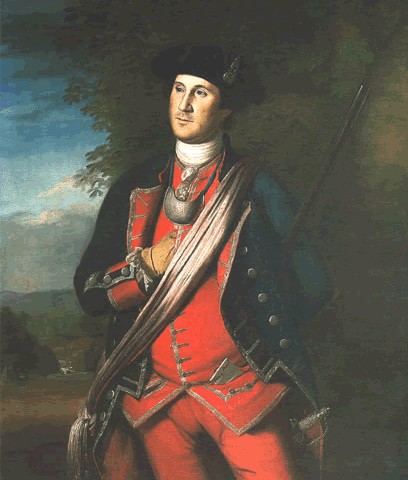
George Washington won distinction as a
colonial military leader
during the French and Indian War. This
portrait by C. W. Peale
was painted in 1772, about 10 years after
the War's conclusion. |
The French
and Indian War (the American name for the "Seven Years War" in
Europe) is one of America's Forgotten Wars, but
its impact was profound. The victory of the British Empire, its American
colonies, and diverse Indian allies over the French Empire, its colonies, and
its Indian allies conditioned the USA to be a primarily
English-speaking nation that would advance westward, while France's influence in
North America would henceforth be increasingly limited to parts of Canada (and,
briefly, Louisiana and Mexico).
The French
and Indian War led directly to the American War for Independence a dozen
years later, much as the Mexican-American War of
1846-48 led directly to the American Civil War of 1861-65.
PBS Timeline
for French and Indian War ("The War that Made America")
Mr. Nussbaum's
French & Indian War (incl. Pontiac's Rebellion)
1962 Encyclopedia
Britannica documentary
Europe's
Seven Years War & North America's French & Indian War were concluded by the
Treaty of
Paris
of 1763. (This treaty also ended British expulsion of
French-Catholic Acadians from eastern Canada, which had led the Acadians or
Cajuns to relocate to Louisiana.)

Pontiac’s
Rebellion of 1764-5 resulted directly from the French and Indian War (1754-63)
and was another major factor leading to the American Revolution and War for
Independence.
Pontiac’s
Rebellion was one of many American Indian wars of resistance against European
colonial military occupation and European-American settlement. Comparable events
in American Indian history include
-
King
Philip’s War of 1676
-
the three
Seminole Wars in 1800s Florida
-
the Apache
Wars here in the Southwest led by Geronimo
-
the Sioux
Wars led by Crazy Horse of the same period.
|
The Ottawa Chief Pontiac,
after whom the rebellion is named, was the most prominent of several American
Indian leaders of several tribes involved in the war.
(For the 20th
century the name of Pontiac
was best-known as a brand of car made by General Motors—the Pontiac Firebird or
GTO were popular muscle-cars—whose original headquarters were in
Pontiac,
Michigan.) |
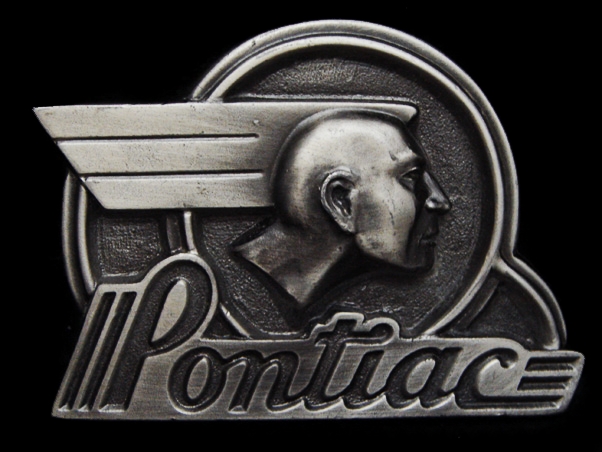 |
The current
upper-Midwestern states of
Michigan, Wisconsin, Illinois, Ohio and
Pennsylvania were the site of
Pontiac’s
Rebellion.
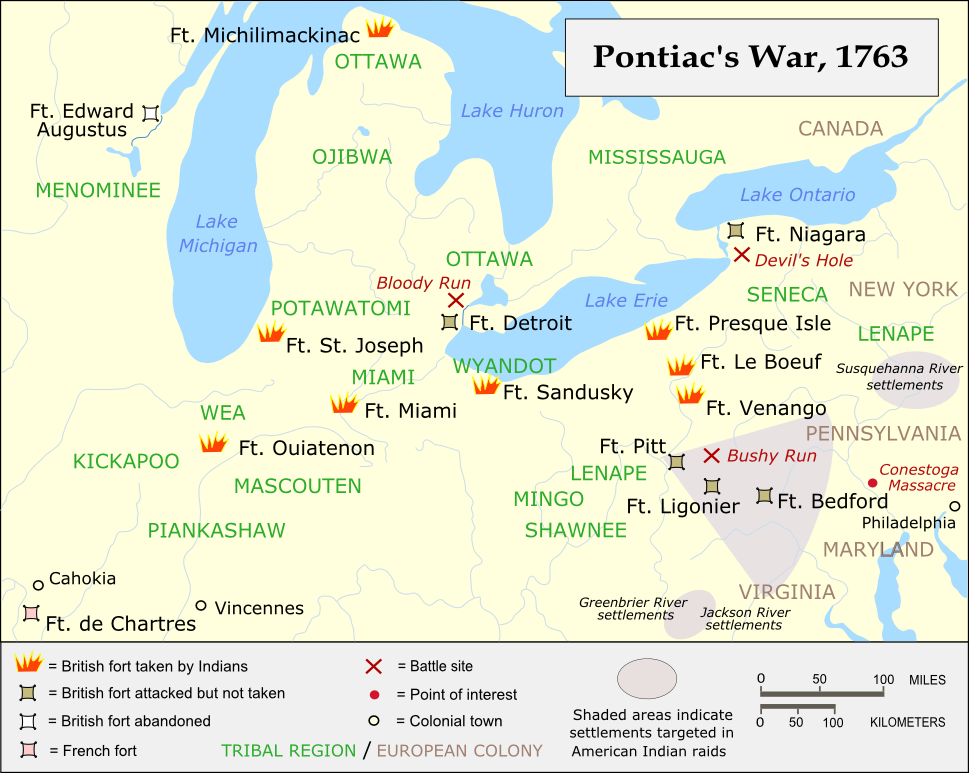
British defeat of the French broke down old trading
partnerships between French and Indians. The French colonial imprint had
been light, with French men often marrying Indian women to create inter-social
networks of trust and trade. In comparison, the English held themselves apart
from the Indians, and many Indians' former alliance with the French gave rise to
bitterness and vengeance.
|
An Indian holy man known only as "the
Delaware Prophet" preached that Indians should return to their traditional ways
and avoid working with the British. (The Delawares were the tribe that adopted
Chingachgook and his son Uncas, the fictional Mohicans in Cooper's
Last of
the Mohicans.)
Chief
Pontiac repeated
the Delaware Prophet's message to other tribes including the Seneca, Chippewa
(Ojibwa), Miami,
Potawotomi and Huron (Magua's original tribe in
Last of
the Mohicans).
Most of these Indians had sided with the French in the French and Indian War.
Pontiac
led sieges on several British forts and Indians mounted raids on colonial
settlers in Indian lands.
|
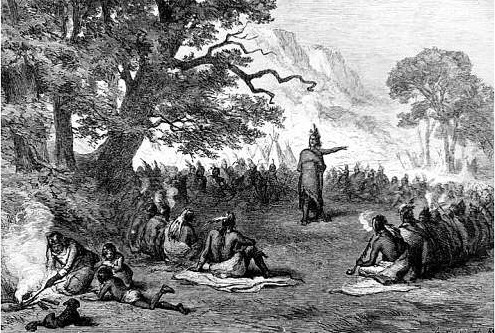
19c artist's rendering of Pontiac rallying a
counsel of Indians |
|
Paxton Boys’ Massacre:
Scotch-Irish settlers in
Pennsylvania,
angry at lack of colonial protection against Indian raids, attacked peaceful
Conestoga Indians, killing 6 and later 14 more in area of
Paxton,
PA.
Later a mob associated with these settlers marched on
Philadelphia in
pursuit of Moravian Indians, but Benjamin Franklin and other Philadelphia
leaders negotiated a settlement. |
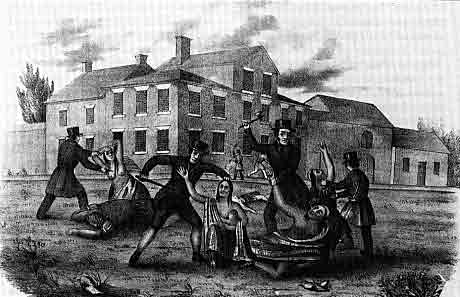
19c rendering of Paxton Boys' Massacre |
|
Actions by both sides were terrifying.
Results of the French and Indian War were a drastically reduced presence for
France in the New World. For the British, English, and Native Americans, many
issues remained unresolved or precarious.
 France ceded all its territory East of the
Mississippi River to Britain, and ceded its Louisiana Territory west of
the Mississippi to its ally Spain in compensation for Spain's ceding
Florida to Britain. (France regained the Louisiana Territory in 1800,
then sold it to the USA in 1802 as the Louisiana Purchase.)
France ceded all its territory East of the
Mississippi River to Britain, and ceded its Louisiana Territory west of
the Mississippi to its ally Spain in compensation for Spain's ceding
Florida to Britain. (France regained the Louisiana Territory in 1800,
then sold it to the USA in 1802 as the Louisiana Purchase.)
 The British Proclamation of 1763 sought to re-organize
administration of the North American interior The British Proclamation of 1763 sought to re-organize
administration of the North American interior
 Temporary
boundary line between European colonization east of the
Appalachian mountains
and Indian lands west established. (See map to left.) Temporary
boundary line between European colonization east of the
Appalachian mountains
and Indian lands west established. (See map to left.)
 Private purchase of Native American lands
outlawed to limit land speculators. Private purchase of Native American lands
outlawed to limit land speculators.
 American colonists
remained eager for more western land, therefore resentful of Britain. American colonists
remained eager for more western land, therefore resentful of Britain.
 Already many colonists had settled beyond the line,
creating a conflict between the colonists' claims and British treaties,
which
contributed to the Revolutionary War. Already many colonists had settled beyond the line,
creating a conflict between the colonists' claims and British treaties,
which
contributed to the Revolutionary War.
 British
soldiers expected payment in lands—George Washington, for instance, was
granted 20,000 acres in
Ohio for his service to the British in the French and
Indian War. British
soldiers expected payment in lands—George Washington, for instance, was
granted 20,000 acres in
Ohio for his service to the British in the French and
Indian War.
Subsequent treaties opened Kentucky
and current WVA to British settlement, but thirteen years later
the Declaration
of Independence would allude to the boundary b/w colonies and Indians lands as a reason for American
Independence:
"[The British King] has endeavoured to prevent the
population of these States; for that purpose obstructing the Laws for
Naturalization of Foreigners; refusing to pass others to encourage their
migrations hither, and raising the conditions of new Appropriations of Lands." |
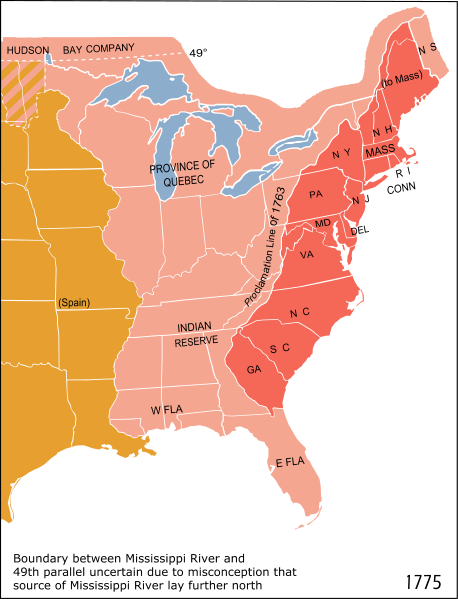 |
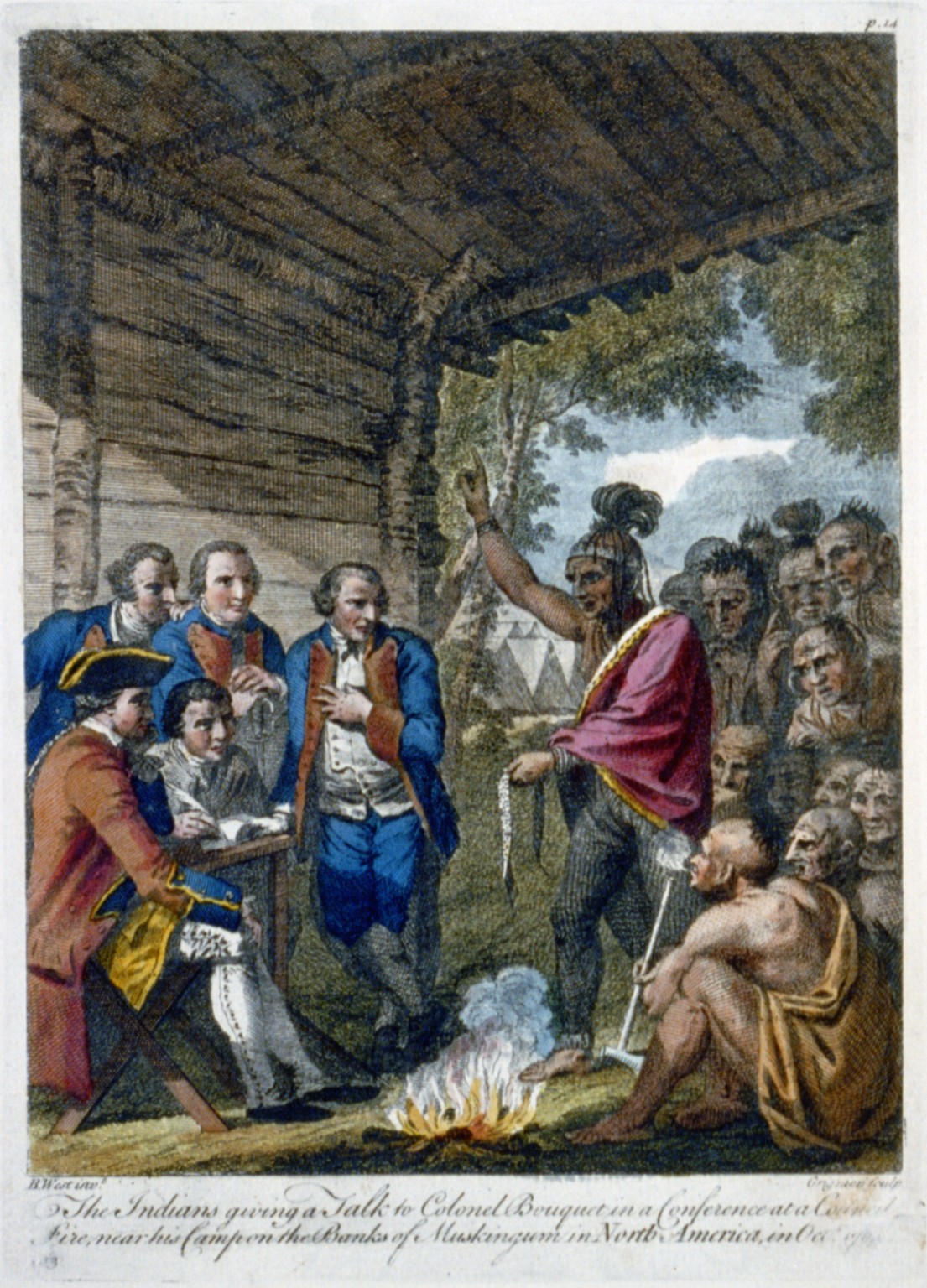
Indians of the Iroquois Confederation
negotiating with British Colonel Henry Bouquet.
Note Indian leader's use of
wampum for gift or record-keeping.
|


![]()





